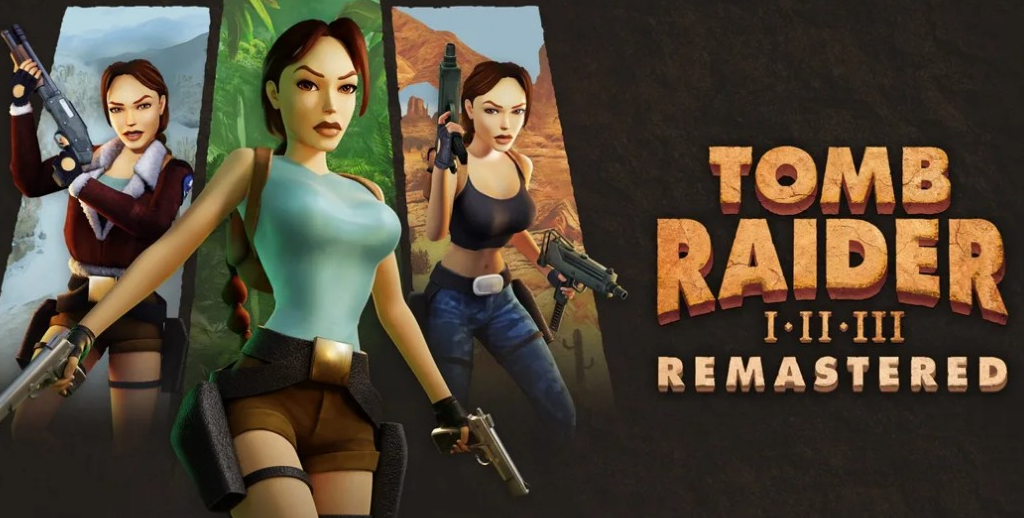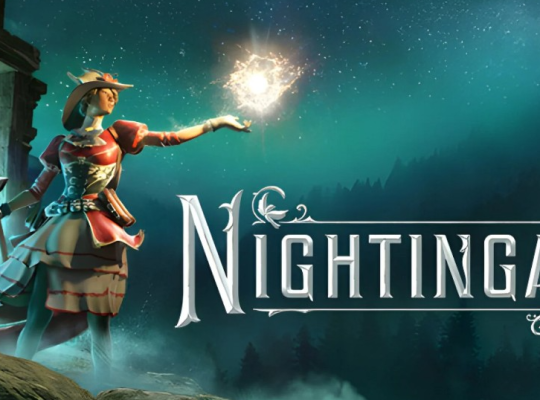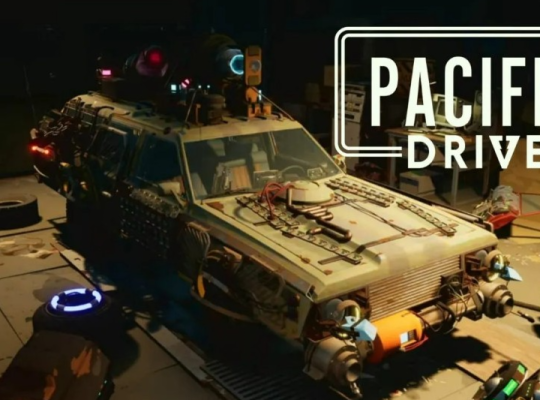Tomb Raider 1–3 Remastered has held a special place in my gaming history. The genesis of this journey dates back 21 years, with the second entry in the series becoming an unexpected “gift” from my mother’s boyfriend. Eager to declutter his closet, he bestowed upon me his PlayStation along with a collection of games—sans jewel cases. Little did I know, Tomb Raider II would become an immersive experience, blending captivating action, intricate puzzles, and the groundbreaking feature of having a female protagonist, making it the first game of its kind in my possession.
Reconnecting with the Tomb Raider II portion of Aspyr’s remaster has sparked a retrospective question: What in the natural hell was 15-year-old Ash thinking? Tomb Raider 1–3 Remastered, available on Switch, Xbox, PC, and Playstation, led to an exercise in self-flagellation, predominantly attributed to the game’s controls, which accounted for a staggering 85 percent of my gaming woes. My ingrained familiarity with the conventions of “modern” 3D platformers left me with nothing but frustration towards this remake.
Despite the remaster’s commendable features, such as the ability to remap buttons, the option to choose between the original’s tank controls or the self-proclaimed “modern” controls, and finer settings like sensitivity and dead zones, Lara’s movements still felt like a clunky, awkward mess. The struggle became palpable when, for no apparent reason, Lara or her camera failed to respond to my button presses, a significant hindrance in a platformer where visibility is paramount for an enjoyable gaming experience.
However, amidst the vexation, moments where Lara behaved predictably reignited my love for the game. Tomb Raider 1–3 Remastered, true to its roots, preserved everything from secret locations and key item placements to enemy patterns. Remarkably, even the graphics could remain unchanged, offering a quick escape to the nostalgic charm of old-school PSX graphics with a simple button press.
Tomb Raider 1–3 Remastered, woven into the fabric of my gaming past, presented a dichotomy of emotions. The struggle with contemporary controls clashed with the timeless allure of the original game. Each button press served as a reminder of the 21-year journey, raising the perennial question: Was my affection for the game a mere consequence of youthful naivety, or does Tomb Raider 1–3 Remastered genuinely withstand the test of time? The answer, elusive amidst frustrations and fond memories, remains buried in the layers of gaming history.
Tomb Raider 1–3 Remastered: A Deep Dive into Nostalgia and Modernization
Embarking on the journey into the newly remastered world of Tomb Raider I–III, my expectations were set to revel in the retro charm of the original graphics, reminiscent of early 3D gaming. Given my affinity for the pixelated textures, boxy character models, and the unique aesthetics of the ’90s, I anticipated spending the majority of my time in the comfort of the retro mode. However, what unfolded was a surprising dance between the cozy embrace of nostalgia and the alluring appeal of modern enhancements.
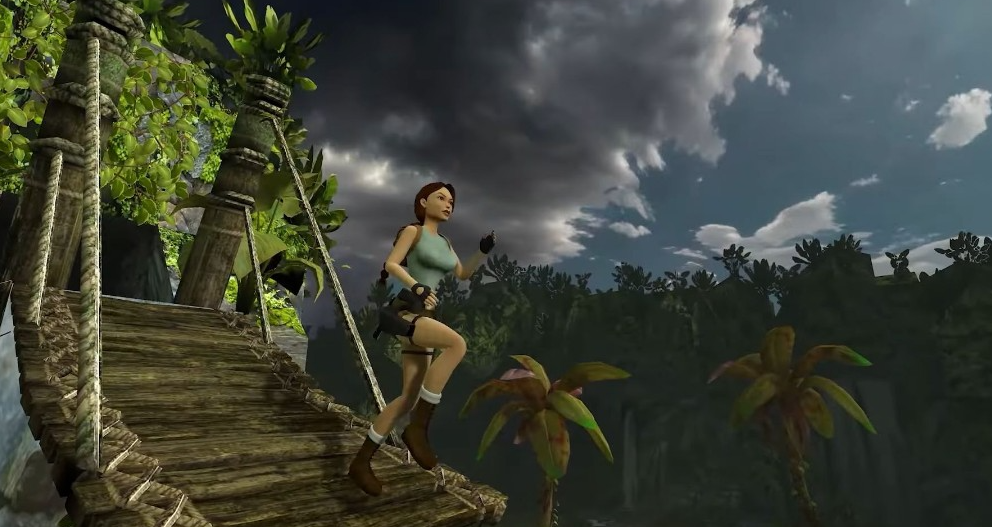
In the realm of Tomb Raider 1–3 Remastered, available on various platforms including Switch, Xbox, PC, and Playstation, the remastered graphics proved more captivating than I initially imagined. The retro mode, while offering a trip down memory lane with its pixelated landscapes and familiar aesthetics, faced stiff competition from the remastered visuals. The right-angled environments, adorned with pin-sharp textures, exhibited a delicate balance between retaining authenticity and embracing a shiny modernity.
The landscapes, often characterized by repetitively tiled patterns, managed to seamlessly straddle the line between retro authenticity and compatibility with contemporary screens. What caught my eye were the additions seamlessly integrated into the remastered version—3D foliage, spider webs, detailed items, dynamic light shafts, and other intricacies that were either absent or presented as flat objects in the original. Astonishingly, these new elements felt so natural that it was easy to believe they had always been part of the gaming landscape.
For someone with a penchant for retro aesthetics, conceding that the game looked better with these additions was a revelation. The organic and worn feel brought about by the new details added depth to the visuals, enhancing the overall gaming experience. However, the high resolution of the terrain’s textures, coupled with their noticeable flatness and absence of contemporary lumps and bumps, created an uncanny valley effect. At times, the scenery appeared like ‘Lego wallpapered over with a geography professor’s field trip photos,’ a peculiar amalgamation of old and new.
The remastered graphics, while improving lighting and draw distance, altered the atmospheric impact of certain iconic moments. The famous T-Rex reveal, a hallmark of the first Tomb Raider, lost some of its original impact as the outdoor jungle setting under gloomy skies became more detailed. The mystique of the T-Rex emerging from the inky void of an airless nowhere was replaced by a more vibrant yet less atmospheric encounter in a lush area somewhere in Peru.
Similarly, the exploration of the colosseum in later stages lost its sense of being a crumbling ruin deep within the earth, instead resembling an abandoned tourist hotspot. Despite these shifts, the second game’s opulent marble floors and torchlit temples received a visual upgrade, and Tomb Raider 3’s underwater sequences became more vibrant than the ’90s could have ever envisioned. Notably, after all these years, the cutscenes made an earnest attempt at conveying emotion, though not without retaining some quirks from the past.
Tomb Raider 1–3 Remastered retained key elements that garnered my appreciation—the ability to save/load anywhere, the timeless soundtrack, and the eerie way the gaze of a mummified guardian follows Lara around the room. Yet, some relics from the past seemed out of place in the present. The running water sound effects, stuck in short artificial loops, became an irritation, prompting moments of muted gameplay for a more enjoyable experience. The camera, reminiscent of its behavior 25+ years ago, still forced blind jumps into the unknown due to its refusal to position behind Lara in tight corners.
The gameplay nuances, including bosses with excessive health and basic gunplay mechanics, served as reminders of the trilogy’s age. The limited response of the AI to battle tactics and the outdated depictions of characters outside the British tomb raider archetype raised concerns. The trilogy’s portrayal of anyone diverging from the sassy British explorer, at best, aged poorly and, at its lowest points, veered into racist stereotypes.
Nevertheless, playing through these remasters affirmed that the original trilogy possessed the same allure as remembered, flaws of the ’90s and all. Every solved puzzle felt like a triumphant victory, and the unexpected twists that plunged Lara into unseen traps remained thrilling challenges. The adrenaline rush from successfully executing a daring jump to avoid certain death, coupled with manual ledge grabs, retained its intensity—a thrill often smoothed out in modern adventure games.
The remaster’s accuracy also shed light on elements that perhaps should have remained buried in the past. The uncanny valley effect, the archaic sound effects, the occasionally unruly camera, and the outdated portrayal of characters underscored the fine line walked by Tomb Raider 1–3 Remastered. Like a relic unearthed, this collection presented both the pinnacle and pitfalls of Lara Croft’s adventures.
In conclusion,Tomb Raider 1–3 Remastered invites players on a journey that transcends time, weaving together the nostalgia of the past with the allure of contemporary enhancements. Despite its imperfections and the acknowledgment of offensive depictions, the collection remains a testament to the enduring legacy of Lara Croft’s adventures, capturing the essence of ’90s gaming while confronting the challenges of the present.
Tomb Raider 1–3 Remastered: A Visual and Gameplay Renaissance
As the iconic Tomb Raider series undergoes a transformative remastering in the form of Tomb Raider 1–3 Remastered, players are treated to a blend of nostalgia and contemporary enhancements. Chief among these improvements are the introduction of “modern” controls, health bars for major enemies, and interactive elements signaling their presence with an exclamation mark when Lara Croft approaches. A robust photo mode has been added, and over 200 trophies/achievements beckon players to meticulously explore the labyrinthine tombs.
The most noticeable changes, however, are in the realm of graphics, where Tomb Raider 1–3 Remasteredd has received a significant overhaul. Real-time lighting, more realistic shadows, updated textures, enhanced water graphics, and refined visual effects collectively breathe new life into the classic games. The addition of dynamic elements, such as shafts of light penetrating cracks in ceilings and snowflakes descending in the mountains of Peru, enriches the atmospheric experience.
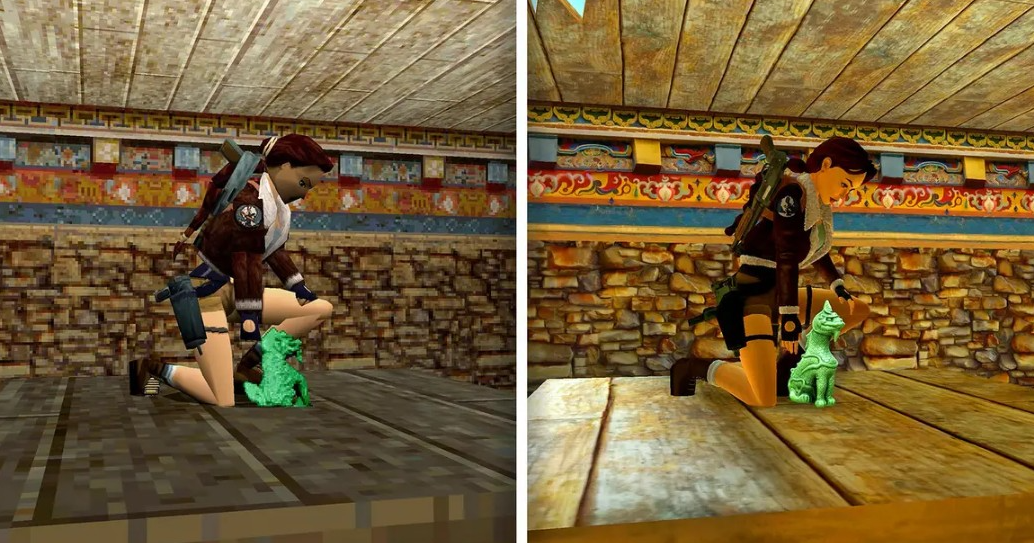
The transformation extends to the once-flat 2D sprites, which have been replaced with fully realized 3D models that bring a fresh dimension to the gaming environment. Lara Croft herself undergoes a makeover, complete with adjustments to animations that stay faithful to the original character design. While not reaching the standards of modern graphical marvels, these remasters succeed in maintaining the retro charm of the original trilogy, offering a sharper image with more saturated colors.
It’s akin to witnessing the games being brought into focus and treated with a brightening filter, making them more visually appealing to contemporary players. These enhancements serve as a bridge between the past and the later entries in the series, namely Tomb Raider: Legend, Anniversary, and Underworld.
Despite the visual facelift, Tomb Raider 1–3 Remastered retains the inherent challenges and frustrations of the original titles, posing a potential hurdle for both nostalgic players and newcomers. The addition of “modern” controls caters to those unaccustomed to the traditional tank controls, and the introduction of health bars for major enemies adds a layer of strategic awareness. Interactive elements marked by exclamation points offer clearer cues for exploration, and the inclusion of a photo mode and an extensive trophy/achievement list incentivizes players to delve deep into the intricacies of the tombs.
The gameplay, however, remains a testament to the era in which these classics originated. The inherent difficulty and lack of handholding, a stark contrast to contemporary gaming norms, may pose a challenge for players accustomed to more forgiving experiences. Clunky controls, uncooperative cameras, nonsensical AI behavior, and the unforgiving level design contribute to an authentic but potentially frustrating journey.
While the remasters have not extensively addressed these challenges, they offer a unique opportunity for reflection on the evolution of gaming difficulty over the years. In an era where mastering the intricacies of titles like Dark Souls and Sekiro is a source of pride, revisiting the unforgiving nature of the original Tomb Raider games serves as a reminder of a bygone era in gaming.
The flaws of the past persist in these remasters, occasionally standing out more prominently when compared to the refinements seen in modern gaming. Shootouts with human enemies remain simplistic, characterized by standing and firing until a sufficient number of bullets have been discharged. Tomb Raider 1–3 Remastered Quirks like the invincibility of characters like Pierre DuPont, guns locking onto deceased foes, and mysterious enemy spawns in empty rooms echo the idiosyncrasies of the ’90s gaming landscape.
For those already enamored with the original gameplay and combat dynamics, Tomb Raider 1–3 Remastered offers a trip down memory lane with a fresh visual appeal. However, for those not previously captivated by the series’ gameplay, the flaws persist, potentially hindering broader enjoyment. As controllers are thrown down in exasperation and frustration spills over into the digital realms of the tombs, Tomb Raider 1–3 Remastered stands as both a visual triumph and a reminder of the challenges inherent in the early days of gaming.
Tomb Raider 1–3 Remastered Woes: A Battle with Cameras and Saves
Navigating the revamped landscapes of Tomb Raider 1–3 Remastered unveils a duo of frustrations, with the camera proving to be a formidable adversary and the save system perplexing console players. While the remaster brings a visual facelift to the classic titles, certain elements from the original games persist, causing headaches for both new and returning players.
The save system, a crucial aspect of player progress, presents an unexpected hurdle. In Tomb Raider 1-3 Remastered, the manual save feature requires players to select Lara’s passport in the menu—an aspect that is not explicitly communicated. This departure from the original console experience, which relied on save crystals, may catch players off guard. The absence of save crystals, a staple for OG console players, might lead to the assumption that the games autosave, only to discover the harsh reality after a premature death, resulting in lost progress.
A recurring issue that haunts players throughout the remastered trilogy is the unruly nature of the camera. Inheriting its unpredictable behavior from the original games, the camera repositions itself at inconvenient times, zooms in or out seemingly without rhyme or reason, and often becomes a perilous nuisance. These camera challenges persist even with the introduction of modern controls, creating a more tangled web of difficulties.
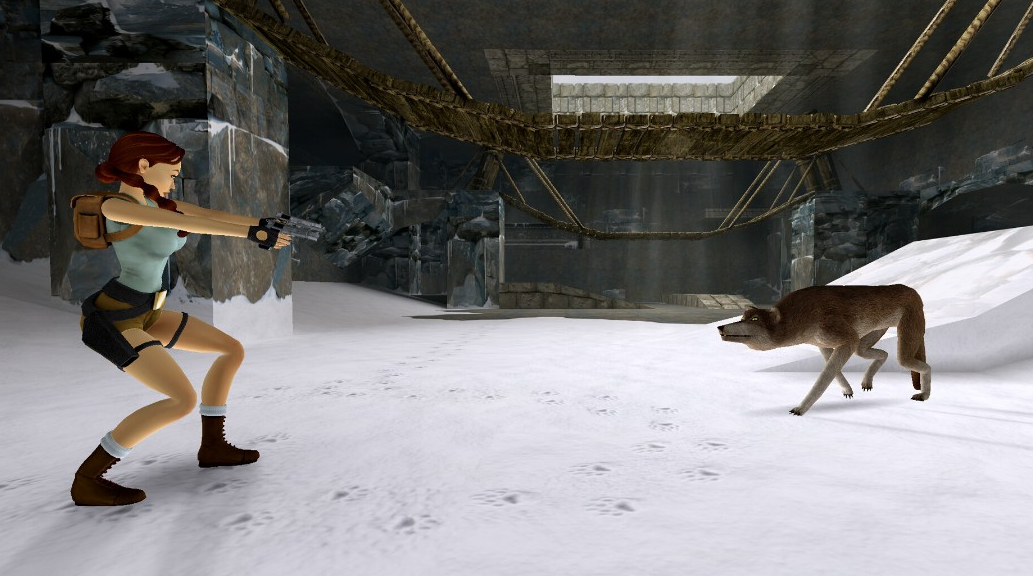
Lara’s movements, now tied to the camera with modern controls, frequently encounter obstructions and unexpected flips, particularly when attempting jumps. If the camera fails to align directly behind Lara during a jump, she launches herself diagonally, often leading to fatal consequences. Especially in the early stages, the misbehaving camera becomes a catalyst for missed jumps, untimely falls, and encounters with deadly foes such as lions.
Surpassing even the infamous T-Rex encounter, the camera emerges as a formidable adversary in the remasters, ranking as one of the players’ primary adversaries, second only to the challenging controls. As players traverse the remastered landscapes, battling not just the in-game obstacles but also the capricious cameras and unconventional save systems, Tomb Raider 1–3 Remastered proves to be a test of resilience and adaptability in the face of enduring gaming quirks.
Tomb Raider 1–3 Remastered: Navigating the Challenges
As Aspyr introduces Tomb Raider 1–3 Remastered, an intriguing blend of nostalgia and contemporary adjustments, players encounter the intricate dance between old-school quirks and modern controls. The remaster’s attempt to cater to both dedicated fans and newcomers reveals a nuanced experience that demands a critical examination of its choices.
One of the peculiar choices lies in the modern controls, a feature intended to ease the transition for players accustomed to contemporary gaming conventions. However, Aspyr’s decisions, such as splitting the action button into two (R2 for vaulting/grabbing ledges and Triangle for other actions), introduce an unnecessary layer of complexity. Lara’s tutorial guidance, urging players to use the “action” button, can be misleading, as it sometimes refers to the “shoot” button. This lack of clarity places the burden on players to decipher these nuances, potentially leading to frustrating moments of trial and error.
Moreover, the absence of a tap backward function, except when Lara has her guns drawn, proves to be a significant limitation. Maneuvering Lara for running jumps becomes cumbersome, as tapping down merely causes her to turn without offering the crucial backward step. This oversight forces players to resort to ledge drops and subsequent climbs to position Lara appropriately—an unnecessarily tedious process. Ironically, in some instances, reverting to the traditional tank controls might be a more efficient choice than grappling with the idiosyncrasies of the modern controls.
Tomb Raider 1–3 Remastered caters to a niche audience, primarily comprising original fans and those who acknowledge the inherent jankiness and occasional frustration of the experience. The unforgiving nature, slow pacing, and somewhat outdated visuals of the original Tomb Raider games may pose a challenge for newcomers. Even with a facelift through improved textures, lighting, and the introduction of “modern” controls, these titles remain fundamentally unchanged, demanding a particular taste in gaming history.
The remaster’s appeal diverges between veteran players, frolicking through levels with the embrace of experience and nostalgia, and newcomers facing an arduous journey into ’90s tech and game design. Tomb Raider 1–3 Remastered For enthusiasts of the original Tomb Raider games, the remasters are likely to evoke thrill and satisfaction. However, for those unfamiliar with the quirks or challenges posed by outdated controls, camera issues, or gameplay nuances, the journey may be less forgiving.
This release prompts the need for dual review scores—a consideration for the devoted fans who appreciate the originals and a separate evaluation for newcomers navigating the titles with fresh perspectives. The revamped textures, enhanced lighting, and modern controls may not significantly alter the experience for those unfamiliar with the ’90s gaming landscape. The lens through which these remasters are viewed greatly influences the verdict, with the score tailored more towards the existing fan base. Newcomers are advised to approach Tomb Raider 1–3 Remastered with caution, recognizing the potential hurdles posed by its adherence to ’90s gaming norms and design.
Final Verdict on Tomb Raider 1–3 Remastered: A Painful Journey Down Memory Lane
Regrettably, assigning a low score to the beloved Tomb Raider series is disheartening, but Tomb Raider 1–3 Remastered falls short of delivering a truly enhanced experience. Tomb Raider 1–3 Remastered While the graphics receive a noticeable upgrade, the collection’s significant issues prove debilitating, leaving players to ponder whether revisiting the original games might be a more satisfying choice. The improvements are marred by missed opportunities, as the remasters lack the comprehensive updates that could have justified the tag of a remaster.
The absence of necessary refinements, coupled with persistent glitches and bugs, raises the question of whether a full remake might have been a more fitting approach for the original Tomb Raider 1–3 Remastered games. In essence, Tomb Raider 1–3 Remastered leaves a bittersweet taste, offering glimpses of nostalgia but ultimately failing to provide the comprehensive revitalization that the iconic series deserved.







